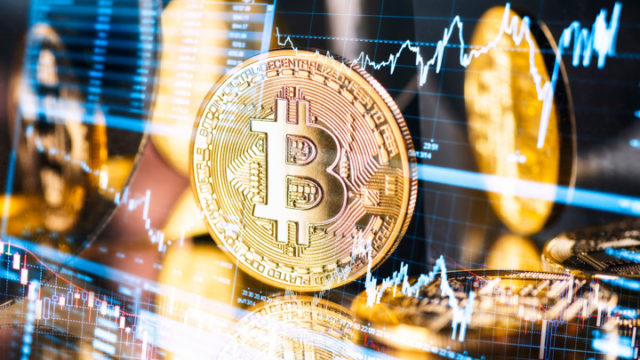LAST UPDATE: 23.28
Major stock indexes on Wall Street rebounded sharply on Thursday, with investors tracing the impact the Omicron mutation will have on the U.S. and global economies, with optimism eventually leading and the Dow Jones rising near 2%.
More specifically, on the dashboard, the industrial Dow Jones increased by 617.75 points or 1.82%, to 34,639.79 points, with the widest S&P 500 to record an increase of 64.06 points or 1.42%, to 4,577.10, while the technological Nasdaq gained 127.3 points or 0.83%, at 15,381.30.
The Dow has risen in percentage terms, its biggest daily since March 5. On Tuesday and Wednesday, the industrial index had lost a total of over 1000 units.
Airline, casino and energy stocks topped profits, recovering from Wednesday’s sell-off. Delta Airlines gained 9.3%, MGM Resorts 7.7% and Hilton Worldwide rose 7.4%.
Boeing shares jumped 7.5% after China decided to allow 737 Max aircraft to resume flying in the air.
The administration of President Joe Biden has reacted to the Omicron mutation in California by calling on companies to increase the obligation to vaccinate their employees, even though a similar mandate from the federal government has been “frozen” by the federal government.
The White House has again imposed strict travel restrictions, requiring passengers entering the United States to have been tested within the past 24 hours.
A second case of the Omicron mutation was found in the United States, specifically in Minnesota, in a state resident who had returned from New York. The body has already recovered, while the one in California has reported mild symptoms.
Apple’s share was among those that lost ground (-0.61%), as the Bloomberg agency reported that the technology giant sees the demand for iPhone to decline, just before the extremely critical holiday season.
“While it’s nice to see a rally, I’m not sure investors need to put a lot of emphasis on it,” said Jim Paulsen, head of investment at Leuthold Group. “Fear and greed will dominate the activity as investment worries oscillate between fears that the worst is not yet over and anxiety about a possible loss of opportunity offered by any new recovery.”
Investors are expecting more information about the new coronavirus mutation, mainly its transmissibility, but also whether it can go beyond the protection provided by vaccines. The possibility that the US Federal Reserve will reduce its asset purchase program faster than expected is also in the spotlight.
Speaking in the US House of Representatives on Wednesday, Fed Chairman Jerome Powell said that “the economy is very strong, with inflationary pressures high, so it’s time to look at reducing the asset market program we announced in November a few months earlier than expected “.
“We remain vigilant with the S&P 500 at a time when the Fed is becoming hawkish in the midst of an inflated market,” said Savita Subramanian, Bank of America Securities senior executive for the US market. He noted that there is a risk of an inflationary blow to household consumption.
However, Bank of America notes that historically December is the strongest month for the S&P 500.
US Treasury Secretary Janet Glenn told a Reuters conference on Thursday that she was ready to use the word “temporary” to describe the current state of inflation in the United States.
“I’m ready to drop the word ‘transient.’
It is recalled that yesterday, the president of the Federal Reserve, Jerome Powell, he said he would like to change the central bank rhetoric, removing the word “transient” from the description of inflation while noting that inflationary pressures “will remain well over the next year.”
Of the 30 Dow shares, 23 traded positive and 7 traded negative. The profits were led by those of Boeing, American Express, Visa, while those losses of Walmart, Merck, Johnson & Johnson.
Macro
Initial U.S. jobless claims rose 28,000 to 222,000 a week through Nov. 27, following a sharp drop last week when new claims fell to a 52-year low.
The big ups and downs of the last two weeks, however, are due to the festive season of Thanksgiving. The government’s process of adapting applications to seasonal changes sometimes creates distortions during the holidays.
The actual number of new applications also fell, to 211,896 last week from 253,518 two weeks ago.
Meanwhile, continuing claims for benefits fell by 107,000 to 1.96 million.
In any case, applications are at low levels and are expected to fall further in the coming months to pre-pandemic levels. New unemployment benefits were as low as 200,000 before the outbreak.
Many people are too scared to return to work, economists say, because they are still afraid of the coronavirus or worried about reopening schools and having to stay home with their children. The Omicron variant also raises concerns.
Companies, for their part, are offering higher wages to attract employees, and wages are growing at the fastest pace in recent years.
.
I am Sophia william, author of World Stock Market. I have a degree in journalism from the University of Missouri and I have worked as a reporter for several news websites. I have a passion for writing and informing people about the latest news and events happening in the world. I strive to be accurate and unbiased in my reporting, and I hope to provide readers with valuable information that they can use to make informed decisions.







